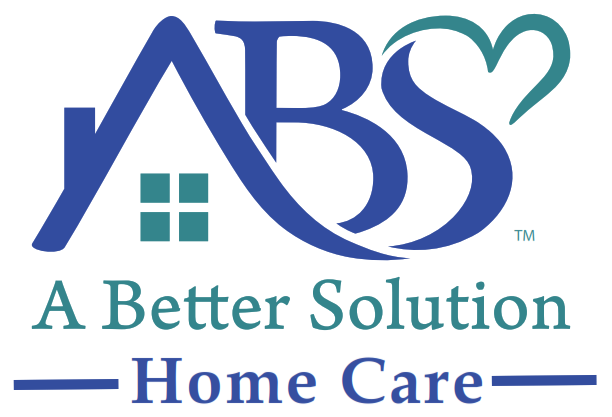
Navigating Home Care Costs & Affordability: What Every U.S. Family Needs to Know
11-07-2025
Choosing care for a loved one is a major decision, and in the U.S., one of the biggest stress points families face is trying to understand home care costs in a way that feels clear, predictable, and practical. When families start their search, they are usually already emotionally stretched — balancing work, guilt, fear of decline, and urgent timing. Understanding how pricing works empowers families to plan confidently and make better aligned decisions. This guide breaks down real numbers, what influences home care pricing, how to reduce the financial burden, and why home care is one of the most meaningful investments a family can make for both quality of life and long-term outcomes.
Understanding the Home Care Costs in the U.S.
Across the United States, the average cost of home care in the U.S. varies based on region, service type, and provider model. In 2025, families can generally expect hourly ranges between $28-$40+ per hour for non-medical care in most regions, while skilled services can go higher. Coastal states, higher cost-of-living cities, and areas with severe caregiver shortages often fall at the higher end of ranges. This variation means that home care costs for one family could be thousands lower or thousands higher annually compared to another family in a different state, even if both require similar support hours.
Personal care services (bathing support, mobility, safety supervision, toileting help, dressing) typically cost less than medically licensed care. Companion care tends to fall toward even lower cost brackets, since it involves emotional support, activities, light household tasks, meal prep, and conversation. Meanwhile skilled nursing — wound care, medication management, injections, post-surgery rehab participation, and complex condition care — is priced higher due to licensing. Knowing the average hourly rate for caregivers specific to your region and your needed care category is one of the first steps in planning effectively. Many families benefit greatly by requesting transparent rate breakdowns before agreeing to a weekly schedule, especially as home care costs accumulate over time.
What Affects the Cost of Home Care?
Every family’s care plan looks different, and price variation reflects those differences.
- Scope of care required
- Medical vs non-medical needs
- Experience level of caregiver
- Frequency, shift blocks, weekend requirements
- Nighttime coverage
- Travel time
- Geographic cost-of-living index
- Care agency overhead (training, insurance, supervision, safety compliance)
The cost of home care services also rises when agencies must balance retention, worker shortages, and rising wage floors. In-home personal care has become highly competitive work, and higher quality talent demands higher compensation. Because of this, families often see escalating home care costs year over year, especially in senior-heavy areas.
Why 24-Hour Home Care Costs More, and When It’s Worth It
Two or Three Caregivers Are Required
No single caregiver can legally or physically work non-stop 24 hours. Rotations increase total labor expense.
High Acuity & Specialized Risk
Dementia wandering, fall risk, post-stroke care, post-surgical recovery, or ventilator support all demand high vigilance, raising the cost of in-home caregivers with advanced skill sets.
Sleep Shifts
Night support (even if “light duty”) adds layered cost because caregiver presence prevents emergency hospitalization and ensures safety.
24-hour coverage is one of the most expensive care models, but often becomes the only alternative that avoids facility placement. When compared to the full annual cost of assisted living or skilled nursing placement, many families find that even high 24-hour home care costs remain the more humane, individualized, and independence-driven choice.
Ways to Make Home Care More Affordable
Affording long-term care is not a one-source solution. It is a layered financial strategy. Families who combine insurance, public program support, private pay reduction strategies, and financial tax planning achieve higher sustainability.
Private Pay & Insurance Integration
Many families pay some portion privately, these are referred to as private pay home care rates, but combining them with long-term care insurance benefits can significantly reduce out-of-pocket strain. The cost of in-home health care services may be partially or fully reimbursable depending on policy terms, elimination periods, and duration benefits.
Federal & State Support Pathways
For those who qualify, Medicaid coverage for home care is one of the most powerful cost offset solutions in the United States. Medicare does not cover indefinite custodial care, but may cover skilled temporary care post-hospitalization. Veterans also have highly robust home care benefit structures.
Tax and Credit Based Relief
Tax deductions for at-home care, medical care, and caregiver support credits can reduce yearly burden. This is why a structured home care financial assistance program is extremely helpful for middle income families needing to optimize every benefit available.
Negotiation & Schedule Optimization
Flexible care models (split shifts, day-part scheduling, respite blocks), hybrid agency/support rotation, tele-care coordination and hourly reduction can maintain care quality while lowering total yearly home care costs. Comparing agencies and itemized cost structures also provides significant advantages in the United States.
Families who adopt this layered, blended structure achieve far more affordable home care while still maintaining safety support.
The True Value of Home Care
Beyond the numbers, the cost of elderly home care should be evaluated through outcome impact, quality of life, prevention value, and emotional stability.
Preventing Burnout Protects Everyone
When family caregivers attempt to shoulder everything — sleep declines, health collapses, depression develops, resentment grows, and medical errors occur. Professional home care stabilizes the entire family ecosystem and reduces crisis.
Long-Term Cost Avoidance Matters
When comparing home care costs to hospitalization and future facility placement, early investment is often cheaper long-term. Reduced ER admissions, reduced falls, improved medication adherence, and reduced infection complications often save tens of thousands per year. This is why families include home care inside long-term care financial planning models and compare private pay home care options to institutional long-term cost comparisons.
When comparing home care vs assisted living costs, the home model frequently reduces long-term lifetime spend because you only pay for the hours and level of support you truly need. The financial pressure is more targeted, not flat and fixed like facility model pricing.
Emotional ROI Is Powerful and Measurable
A senior who remains in the familiarity of their home retains identity, confidence, autonomy, meaningful connection, and control over their daily life. That return is priceless. And while home care costs can feel overwhelming at first glance, the stability home care provides becomes the difference between surviving aging and genuinely experiencing aging with dignity.
How A Better Solution Home Care Supports Families
A Better Solution Home Care understands the real emotional and financial pressure behind choosing care support. We help families find low cost in home senior care pathways without sacrificing clinical safety, caregiver experience, or meaningful connection.
Flexible Structure, Customized Plans.
We design care that adapts, not care that forces families into rigid commitments. This allows families to manage out-of-pocket home care expenses using targeted scheduling, care rotation strategy, and caregiver matching.
Transparent, Ethical Financial Guidance
We actively guide families through resources, insurance options, national aid programs, local subsidies, VA benefits, and pass-through payment planning to maximize funding home care services support layering. This eliminates guesswork and gives families clarity on future spending estimates. We also assist families with financial assistance for senior care when eligible resources exist in their city and state.
Because sustainable care delivery is only possible when finances and care realities align, A Better Solution helps families actively strategize budgeting for senior home care and multi-year care timeline planning. When families need hybrid support instead of full-time support, we configure shift levels to align real financial ability with real daily safety needs. This protects families emotionally, financially, and clinically long term, while maintaining home care costs stability.
Why Understanding Home Care Costs Helps Families Make Smarter Decisions
Understanding home care costs doesn’t need to be overwhelming. When families have access to transparent numbers, comparatives, resource pathways, and expert guidance, affordability becomes realistic, not impossible. Care should never feel like a burden or a crisis response. It should feel like a planned safety net that allows seniors to age with dignity, and families to protect their own health, stability, and peace. A Better Solution Home Care creates individualized, compassionate, flexible support that reduces pressure, stabilizes daily life, and makes care financially reachable.
Contact A Better Solution Home Care today to discuss affordable home care options designed around your family’s needs, because the best care plan is one that protects everyone, while still preserving the meaning and comfort of home!
